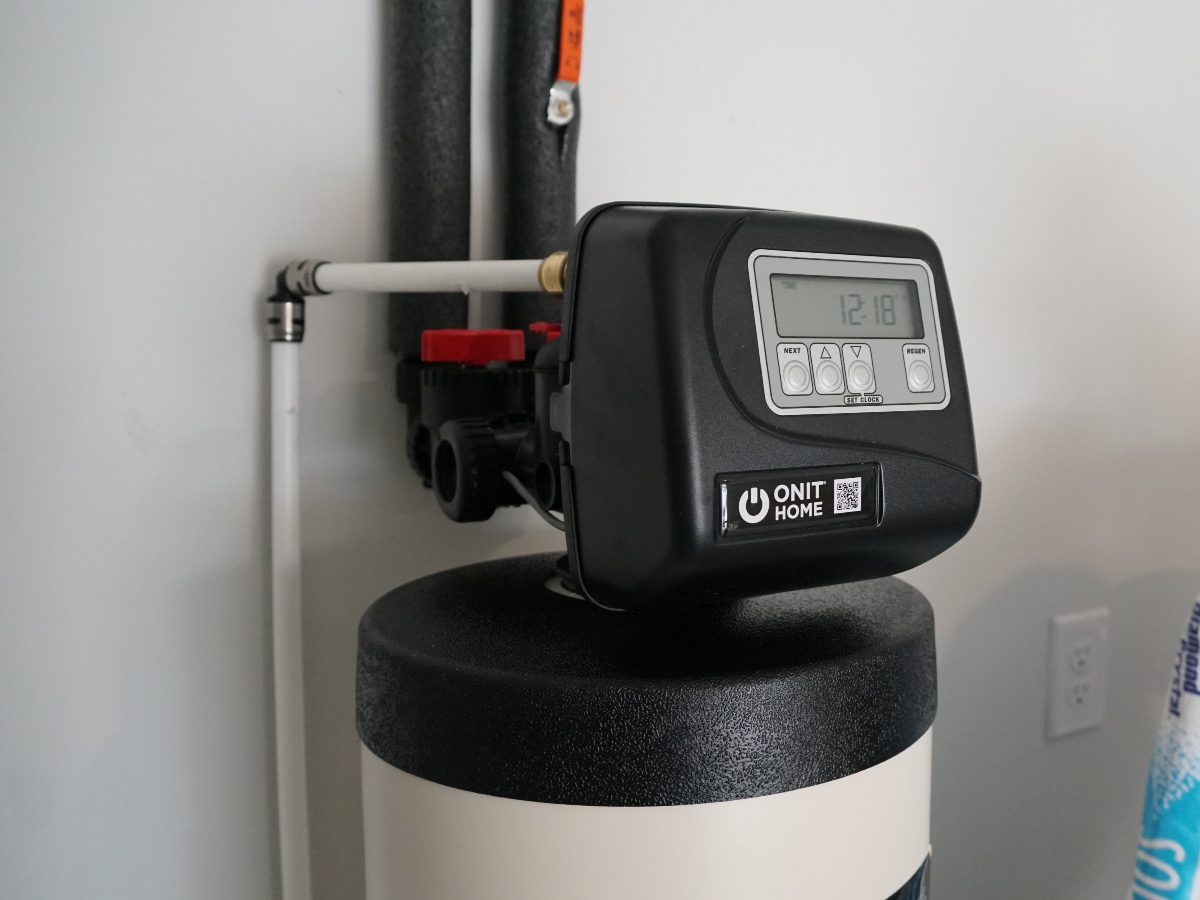We all know that water is essential to life. However, when the same water gets contaminated, it becomes a threat to humans and agroecosystems. Heavy metals in water are among the pollutants that are highly toxic to humans. In this article, we’ll look at how heavy metals can contaminate your water and what health effects they can have.
What Are Heavy Metals?
Heavy metals are a group of metallic elements that are dense, toxic, and difficult to break down or remove from the body. They can enter the body through food, water, air, or skin contact. Once they’re in the body, they can build up over time and cause serious health problems.
Some heavy metals, such as iron and copper, are essential to human health in small amounts. However, too many of these metals can be poisonous. Other heavy metals, such as lead and mercury, have no known function in the human body and can be toxic even in small amounts.
Have you ever heard of the Flint water crisis, which started in 2014? The Flint water crisis began when they changed their water source from Detroit Water to the Flint River. Unfortunately, the pipes were old, and due to the failure to apply corrosion inhibitors, the Flint water was contaminated with lead.
The effects of the crisis are still evident now, showing how heavy metals can affect human health. For example, there was an increased risk of fetal death, loss of hearing, impaired cognition, and delayed milestones in children.

What Are the Most Common Heavy Metals in Water?
The most common heavy metals in water include:
Lead
Lead in water is a severe problem that can cause health problems in people of all ages. This metal can get into your water supply through the corrosion of old pipes or exposure to lead-based paint. Lead is a colorless, odorless, and tasteless metal, so you can consume it through water for a long time without knowing. So whether you’re on municipal or private well water, ensure to test for lead each year.
According to the Environmental Protection Agency, there are no safe levels of lead in water as it’s very toxic. That’s why the maximum contaminant level goals (MCLGs) for lead are set to zero.
Mercury
Mercury is a lustrous, silver-white metal that is liquid at normal temperatures. It’s also known as quicksilver. Mercury is found in small amounts in many things we use. For example, it’s in our thermometers, fluorescent light bulbs, electrical switches, and dental fillings.
When mercury is released into the environment, it can be converted into a more harmful form for people and animals. That’s why it’s crucial to know the sources of mercury and take steps to reduce exposure to it. It can leach into groundwater through the soil. Mercury in drinking water has a maximum contaminant level (MCL) of 0.002 mg/L or 2 ppb.
Arsenic
Arsenic occurs in soil and rocks in small amounts. Human activities are responsible for high levels of arsenic in the environment. While small quantities of arsenic are not harmful, long-term exposure can cause many health problems, including cancer. Once in the water, it’s challenging to remove and may require special treatment. The arsenic limit level in drinking water is 10 μg/L. However, exposure to arsenic, even at these levels for extended periods, harms your health. The arsenic limit is set at this level due to the challenges of removing it from water. So if you can go below this limit, the better.
Chromium
Chromium is a steely gray, lustrous, hard, and brittle transition metal. It exhibits a high melting point of 1907 °C (3465 °F). The common forms of chromium in water are:
- Trivalent chromium (chromium-3): Considered an essential nutrient in humans. It’s present in fruits, vegetables, grain, and meat.
- Hexavalent chromium (chromium-6): It’s found in industrial processes or can occur naturally.
The limit for all forms of chromium in drinking water is 0.1 milligrams per liter (mg/l) or 100 parts per billion (ppb).
Manganese
Manganese is found in small amounts in water. It is not a health concern at low levels, but it can give the water a brown or black color. At high levels, it can be a health concern.
Besides color, manganese also imparts odor, taste, and stains to plumbing fixtures and clothes. The EPA health advisory level for manganese in drinking water is 0.3 mg/L. Manganese can get into water from natural sources or human activities and is more common in underground water. It can come from rocks and minerals in the earth, agricultural activities, or industrial activities.
Copper
Copper is an essential mineral in humans, plants, and animals. It is a crucial component of many enzymes and proteins and plays a vital role in the metabolism and health of cells. Although it is a trace element, meaning that we need only a tiny amount for proper health, too much copper can be harmful. Exposure to high levels of copper leads to nausea, vomiting, diarrhea, and kidney and liver damage. Through the plumbing system, copper can get into your home’s water. As a result, people who reside in parts with high levels of copper in the water supply may be at risk of copper poisoning.
Other heavy metals in water may include:
- Zinc
- Nickel
- Cadmium

What Are the Sources of Heavy Metals in Water and How Do They Get There?
There are different sources of heavy metals in water, both natural and artificial. Natural sources include minerals in the soil and rocks that can dissolve into the water supply. Artificial sources include industrial and agricultural runoff, sewage, and wastewater. Heavy metals can also get into the water supply through leaching from pipes and storage tanks. In addition, improperly disposed of hazardous waste can contaminate water sources with heavy metals.
What Are the Health Effects of Heavy Metal Exposure?
Heavy metals in water can cause various health issues, from minor to more serious ones. Here are some common problems that may arise if you drink water contaminated with high levels of heavy metals:
- Gastrointestinal dysfunction
- Delayed milestones in kids
- Miscarriages and stillbirth
- Congenital disabilities
- Skin lesions
- Kidney failure
- Lung and liver damage
- Nervous system disorders
- Memory loss and brain damage
- Abnormal heartbeat (arrhythmia)
- Anemia
- Vascular damage
- Immune system dysfunction
- Cancer
Some symptoms that may point to heavy metals in water include:
- Nausea or vomiting
- Dehydration
- Abdominal pain
- Chills or a low body temperature
- Diarrhea
- Weakness and fatigue
- Numbness or tingling or prickling, “pins-and-needles” sensation on hands and feet.
Heavy Metals in Your Water: What Can Be Done?
While most water treatment plants can remove heavy metals from drinking water, there are still contamination cases. So how can you protect yourself from heavy metal contamination? The best way is to educate yourself on the sources of contamination and how to avoid them. Once you eliminate the source, you can enjoy clean water.
Investing in a home filtration system is best if there’s no way to eliminate the source. Additionally, ensure you test your water annually because some metals might be present in your water and show no signs like odor, color, or smell. While many filtration methods can remove heavy metals from your drinking water, reverse osmosis is the most effective. Reverse osmosis (RO) passes the water through a semipermeable membrane. This membrane allows water molecules to pass through, but it blocks the passage of contaminants.
The RO membrane’s pore size is around 0.0001 microns or 0.1 nanometers, making it capable of filtering out heavy metals. As a result, heavy metals such as lead, chromium, and copper are removed from the water. This leaves you with cleaner, safer, and tastier water to drink.

Can an ONIT Home Whole Home Filtration System Remove Heavy Metals from Water?
A whole home filtration system from ONIT Home removes 99% of contaminants, including heavy metals, bacteria, and viruses. This type of filter is fitted where your home’s main water line enters, ensuring that your entire home has clean water.
A whole home filtration system extends the life of your appliances and plumbing system. Furthermore, the system helps protect your family from the health problems associated with drinking contaminated water. If you suspect heavy metals in your water, ensure to call a professional to help you find the source of the problem.
Get Professionally Installed Water Treatment Systems from ONIT Home
Your family’s lives are in your hands. So, never put their lives at risk of health problems due to contaminated water in your home. If you suspect heavy metals in water, discontinue use until you deal with the issue.
If you want to test your home water for any pollutants, count on the experts at ONIT Home. We offer free water tests and also interpret the results. Furthermore, we can help you select the right system for your home needs and budget. Finally, our professional installation services will ensure that your new system is set up correctly and performing at its best.
At ONIT Home, family comes first, and that’s why we offer an affordable way of installing a water filtration system in your home. So start utilizing our cutting-edge filtration systems today for only $15 per month. For more information, call us at 1-833-433-0331 to speak with our experts. Need clean water? We’re ONIT.



